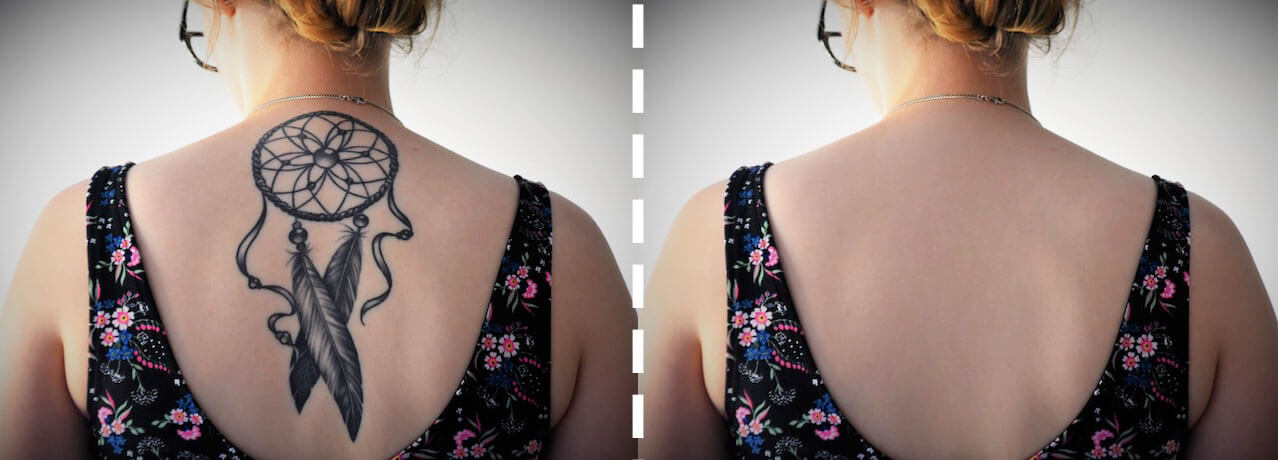 mytattookit.com
mytattookit.com Hello everyone! Today, we're diving into the world of at-home tattoo removal, specifically focusing on creams and techniques that claim to fade or eliminate facial tattoos. We'll review some popular products, discuss their effectiveness (or lack thereof), and walk through a (realistic) step-by-step approach to managing expectations and exploring safer alternatives. It's important to note that complete tattoo removal, especially on the face, is best left to professionals. This post focuses on fading techniques and informed decision-making.
Before we jump in, let's be clear: there is no magic cream or DIY method that will completely erase a tattoo without potential scarring. Many "tattoo removal creams" are scams, containing ingredients that can irritate the skin or even cause permanent damage. This review will aim to filter through the marketing hype and provide realistic information.
Understanding the Limitations of At-Home Methods At-home remedies, including creams and certain exfoliation techniques, primarily focus on fading the tattoo ink. The ink sits deep within the dermis layer of your skin, making it difficult for topical treatments to reach. Fading may occur over time, but complete removal is unlikely. The darker the ink and the deeper the tattoo, the less effective these methods will be.
Reviewing Popular Tattoo Removal Creams Many creams claim to "erase" tattoos, but their ingredients usually consist of common skin lightening agents, exfoliants, and moisturizers. These ingredients *can* contribute to some fading, but not complete removal. Brands such as Wrecking Balm, INK-B-GONE, and Profade are frequently advertised. However, reviews for these products are mixed, often leaning towards dissatisfaction. Users frequently report minimal or no noticeable fading, skin irritation, and a waste of money. It's crucial to read independent reviews and understand the active ingredients before considering any cream. Look for ingredients like hydroquinone (which requires caution and careful use), TCA (trichloroacetic acid a chemical peel agent, which should only be used under professional supervision), and retinoids (which can aid in skin turnover but won't remove ink directly).
A (Realistic) Step-by-Step Approach to Fading a Facial Tattoo (with caution) Remember, this is about *fading* and managing expectations. Professional removal is always recommended for facial tattoos. Step 1: Consultation with a Dermatologist. Before trying *anything*, consult a dermatologist. They can assess your skin type, the tattoo's ink, and the potential risks of any at-home treatment. They can also discuss professional removal options and their suitability for you. Step 2: Patch Test. If you're considering a cream, perform a patch test on a small, inconspicuous area of skin for several days to check for allergic reactions or irritation. Step 3: Exfoliation (with extreme care). Gentle exfoliation can help remove dead skin cells and potentially fade the tattoo slightly over time. Avoid harsh scrubs or peels, especially on the delicate skin of the face. Consider a very mild chemical exfoliant like a low percentage AHA (alpha hydroxy acid) or BHA (beta hydroxy acid) *only* if your dermatologist approves and you follow their instructions meticulously. Step 4: Topical Treatments (with dermatologist's guidance). If a dermatologist approves, they might suggest a cream containing retinoids or other skin-lightening agents. Use these products sparingly and always follow instructions carefully. Step 5: Sun Protection. Sun exposure can darken tattoos and make them more difficult to remove. Apply a broad-spectrum sunscreen with a high SPF (30 or higher) daily, even on cloudy days. Step 6: Patience and Realistic Expectations. Fading a tattoo takes time and consistency. Don't expect dramatic results overnight. Monitor your skin for any adverse reactions and discontinue use if irritation occurs. Step 7: Consider Professional Removal. If you're serious about removing the tattoo, professional laser tattoo removal is the safest and most effective option.
Understanding the Risks Attempting to remove a facial tattoo at home carries significant risks, including: Scarring Skin irritation Hyperpigmentation (darkening of the skin) Hypopigmentation (lightening of the skin) Infection Permanent skin damage It's crucial to prioritize your skin's health and safety above all else.
Professional Removal Options: Laser Tattoo Removal Laser tattoo removal is the most effective method for removing tattoos. It works by breaking down the tattoo ink into smaller particles that the body can then eliminate. The number of sessions required depends on the size, color, and location of the tattoo, as well as your skin type. While it can be expensive and require multiple treatments, laser removal offers the best chance of complete removal with minimal scarring when performed by a qualified professional. Picosecond lasers are often preferred for faster and more effective removal compared to older laser technologies.
Alternative Options: Tattoo Cover-Up Instead of removal, consider a tattoo cover-up. A skilled tattoo artist can create a new design that incorporates or completely masks the existing tattoo. This is often a less expensive and less painful option than laser removal.
In conclusion, while at-home tattoo fading methods might offer minor improvements, they are unlikely to completely remove a facial tattoo and can pose significant risks. Consulting with a dermatologist and considering professional laser tattoo removal or a cover-up are the safest and most effective options for addressing unwanted facial tattoos. Remember, your skin's health is paramount.
How To Remove A Face Tattoo
 mytattookit.com
mytattookit.com How To Remove A Tattoo From Photo With Ease
 blog.pincel.app
blog.pincel.app How To Remove A Tattoo From Photo With Ease
 blog.pincel.app
blog.pincel.app
Categories: